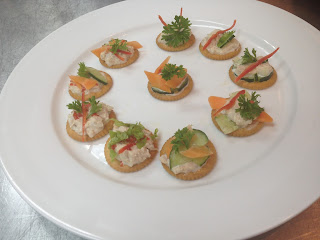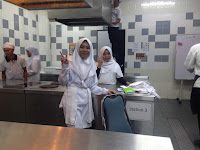CHAPTER 6 - STORING AND ISSUING CONTROLS
Directs and
stores
-
Directs are charged to food cost as
they are received, on the assumption that these perishable items have been
purchased for immediate use.
-
Stores described as consisting of
staples.
-
When purchased, these foods are considered part of
inventory until issued for use and are not included in cost figures until they
are used.
Storage
system goals
v To determine the value of
goods held in stock
v To compare the value goods
actually in the stores at particular time
v To list slow moving items
v To compare the usage of food
with food sales, to calculate food % and gross profit
v As a deterrent against loss
and pilferage
Inventory turnover
} Inventory
turnover is a measure of the
number of times inventory is sold or used in a time period such as a year.
} Inventory turnover rate is
calculated by means of the following formulas:
} Average Inventory = Opening inventory +
Closing inventory
2
} Inventory turnover = Food cost
Average inventory
Physical
and perpetual inventory control systems
•
Perpetual Inventory - Running record of balance on
hand for each item of goods in a storeroom.
•
Provides a continuing record of food and supplies
purchased, in storage, and used.
•
Physical Inventory - An actual account of items in
all storage.
•
Taken at the end of each month, in orders two or
three times a year.
•
Used to determine food cost.
Bin cards
} A document that records the status of a good held
in a stock room.
} A typical retailing business with a large stock room
will use a bin card to record a running balance of stock on hand, in addition
to information about stock received and notes about problems associated
with that stock item.
•
Condition of facilities and equipment
•
Arrangement of foods
•
Location of facilities
•
Security of storage areas
•
Dating and Pricing of stored foods



Comments
Post a Comment